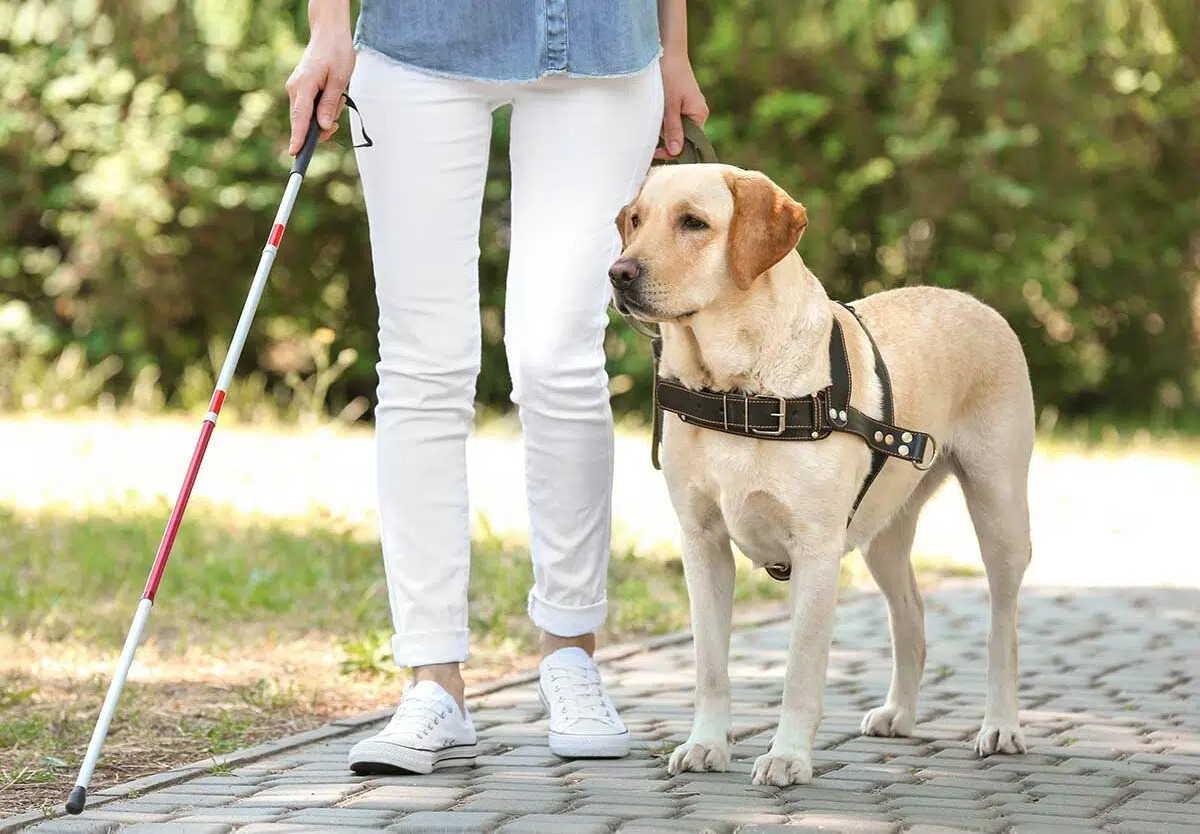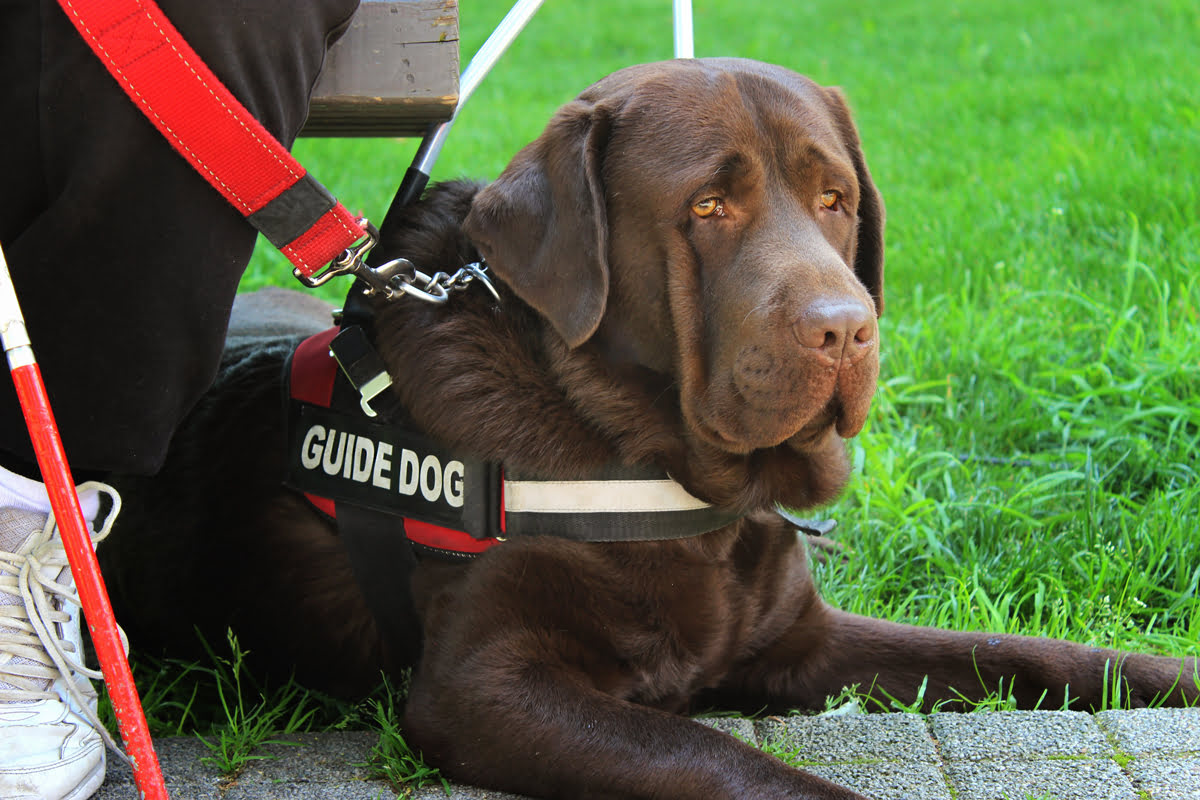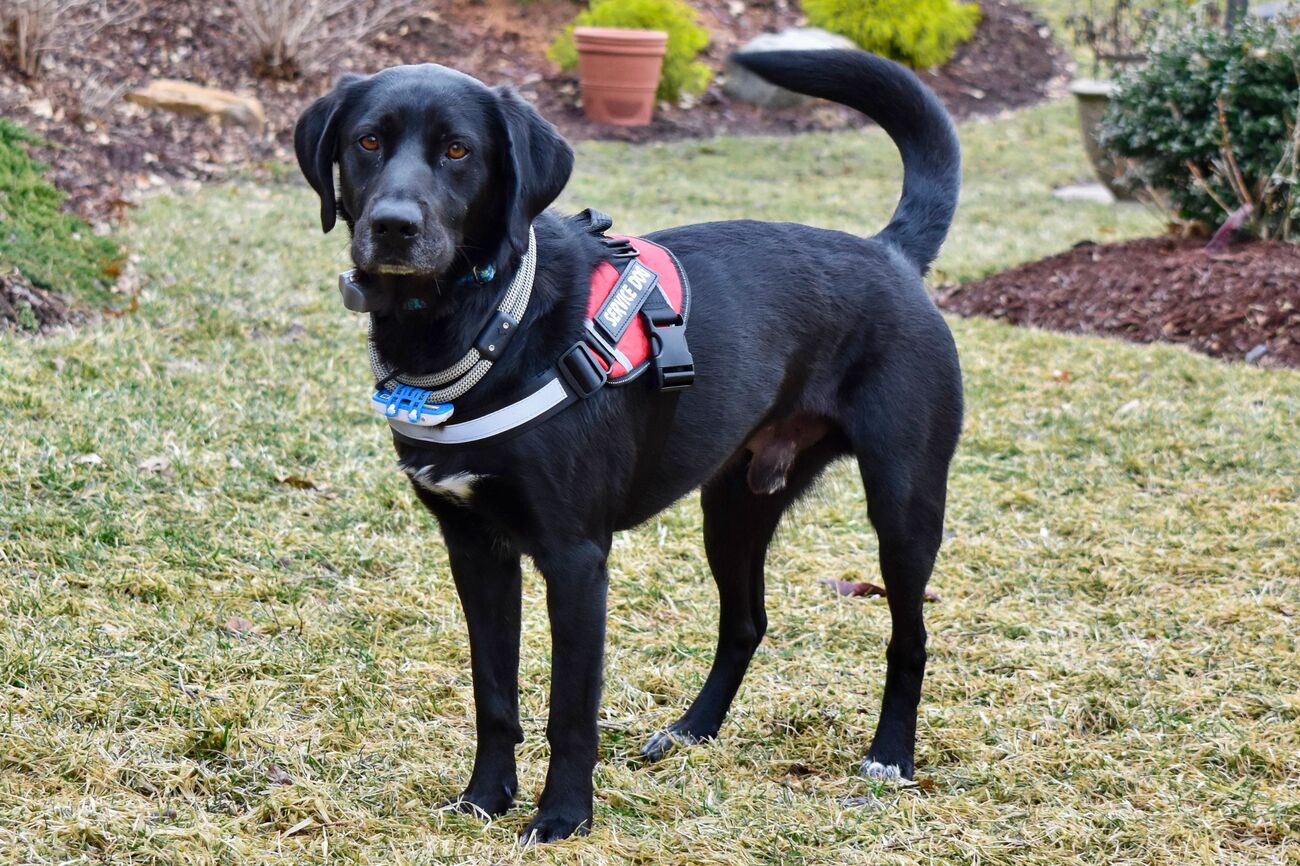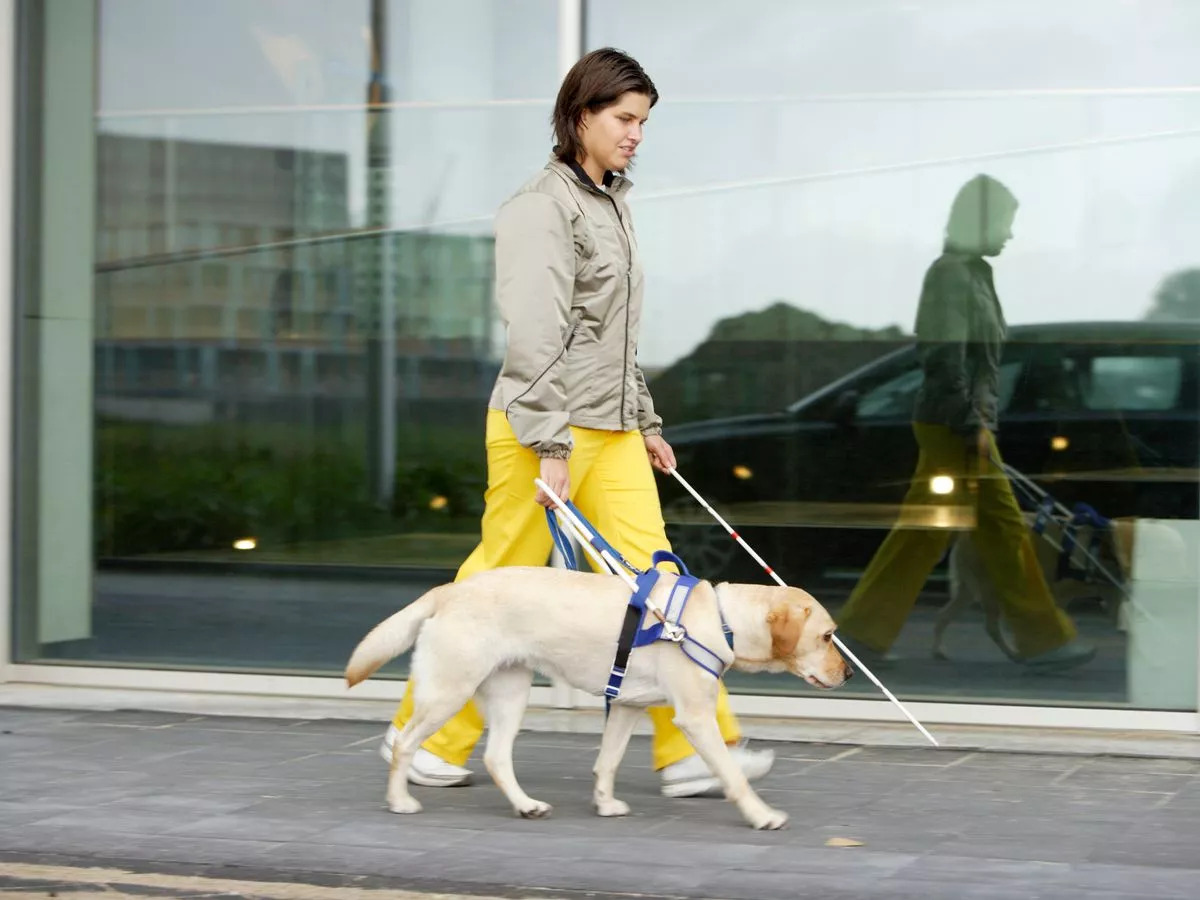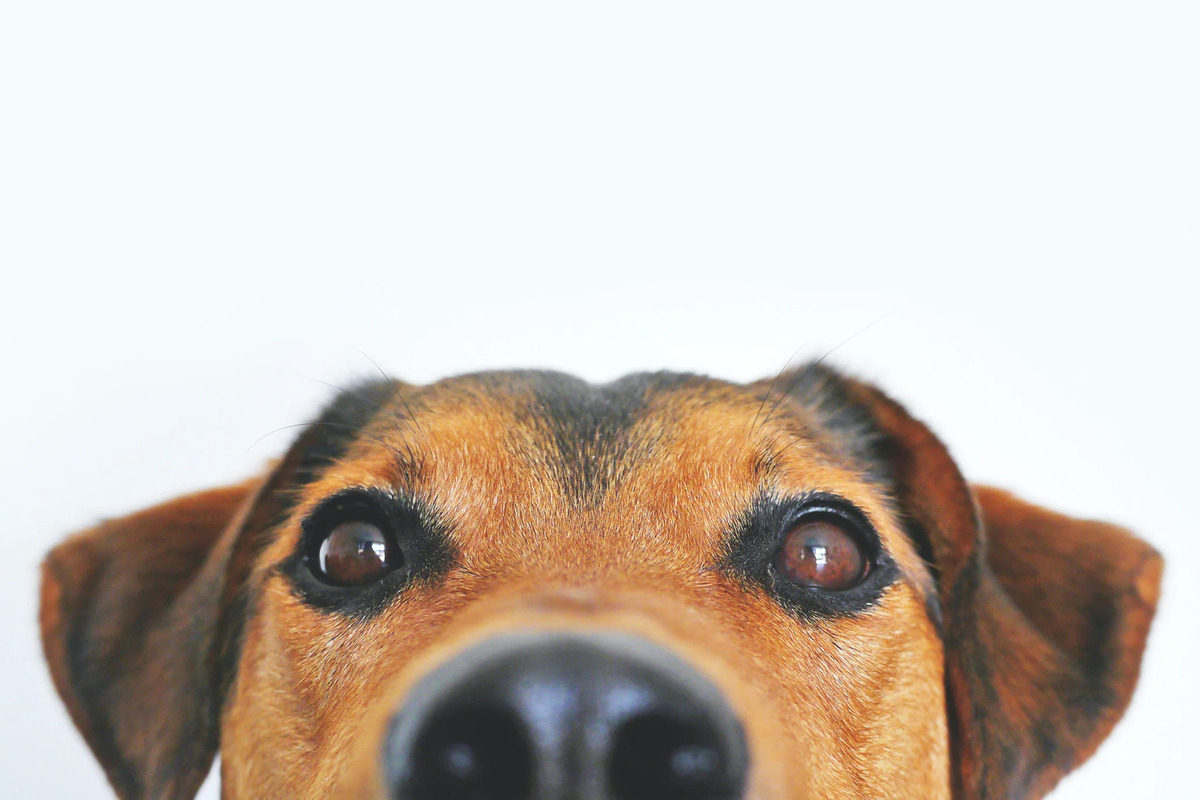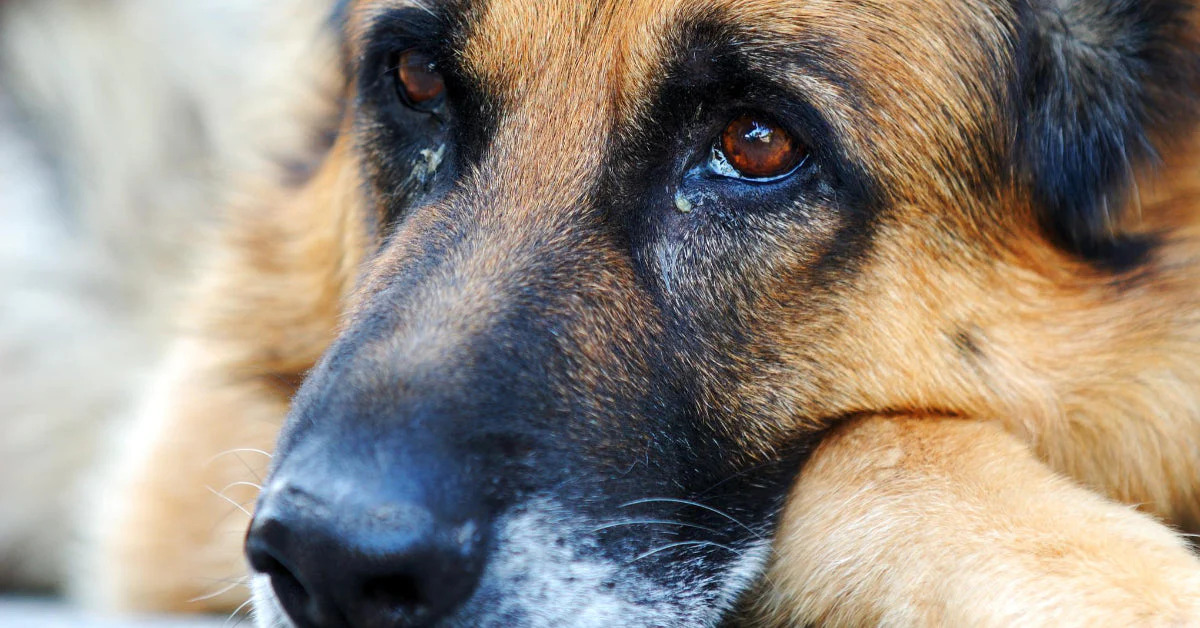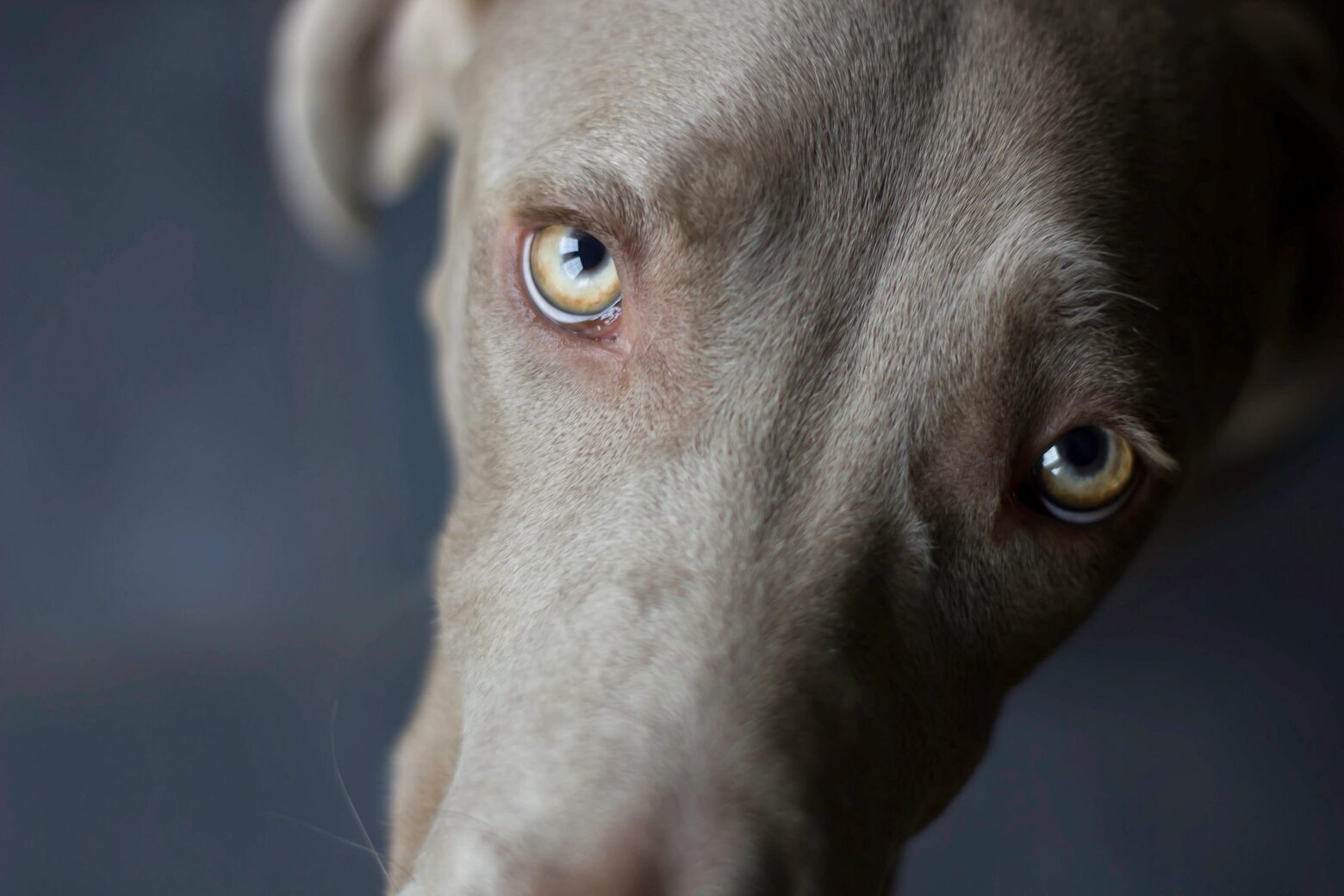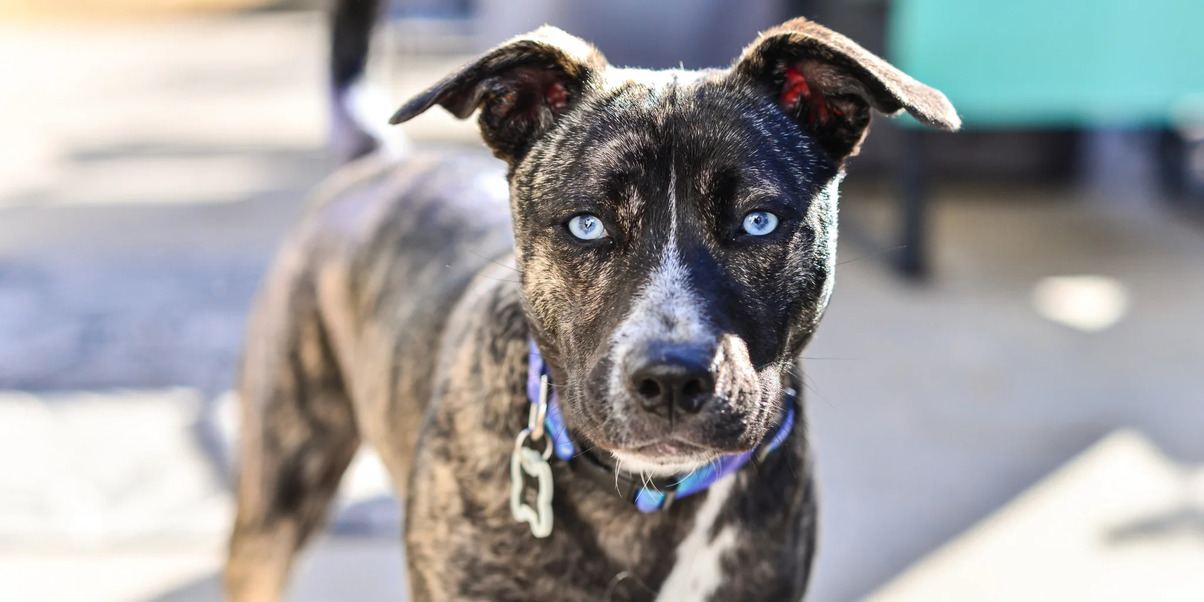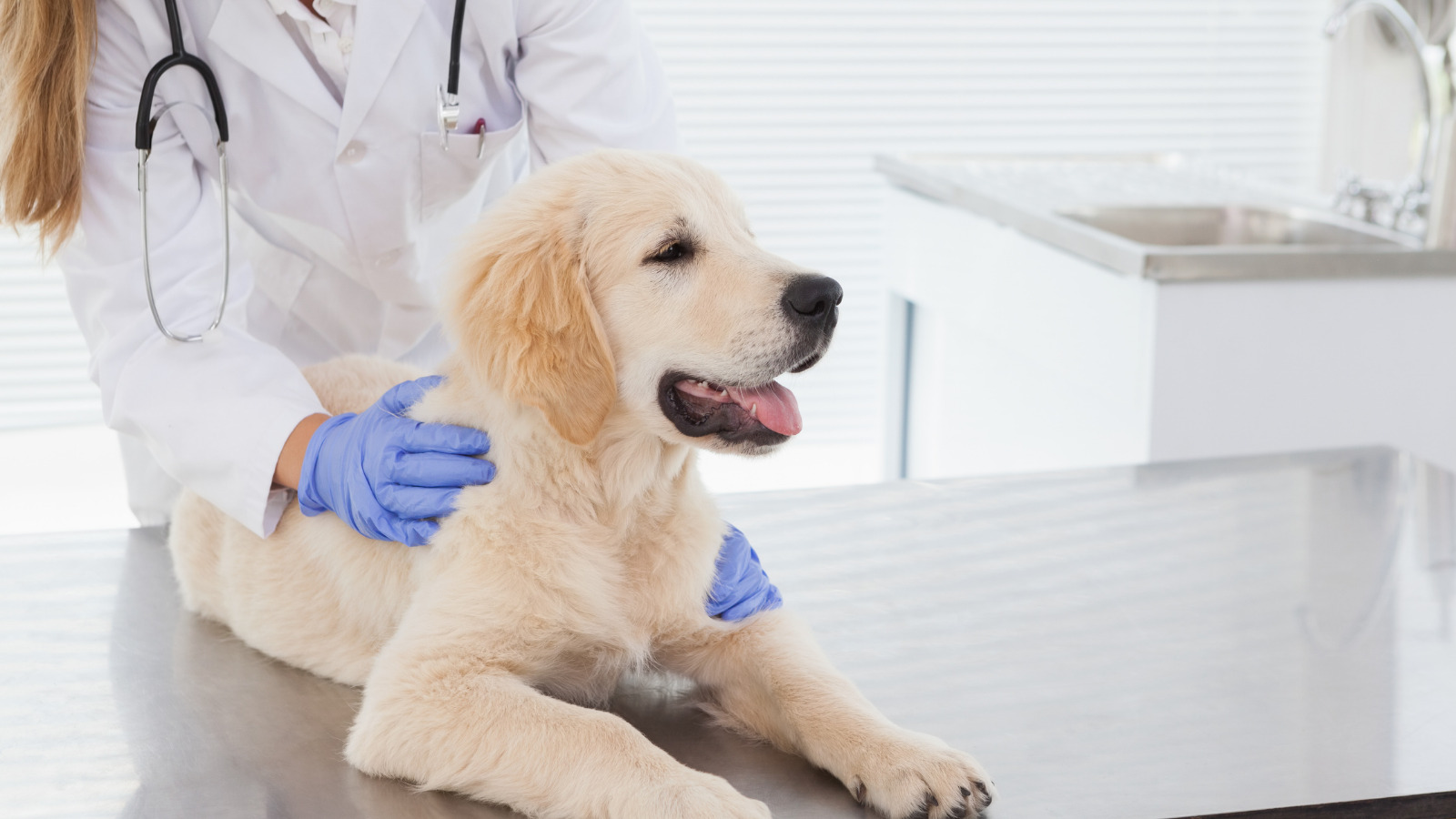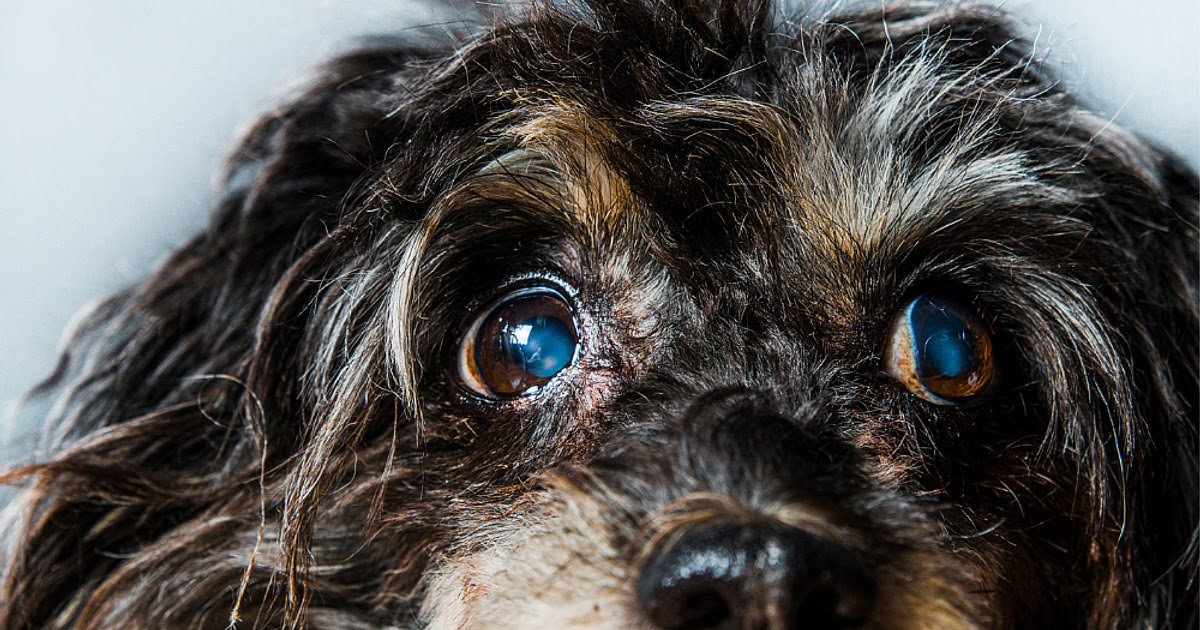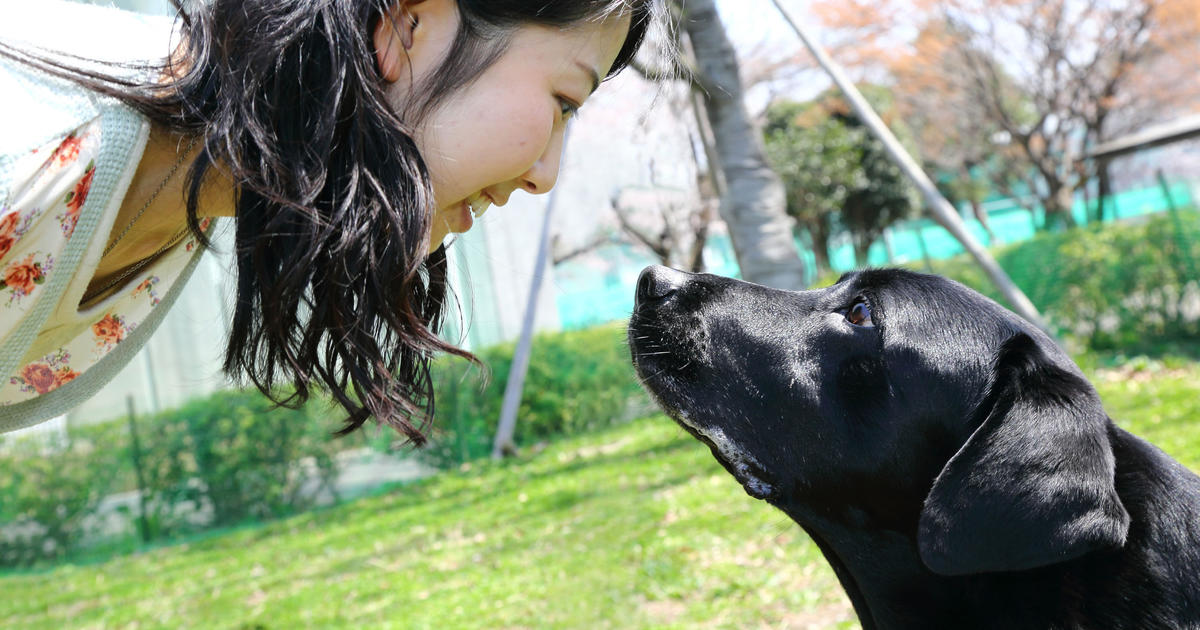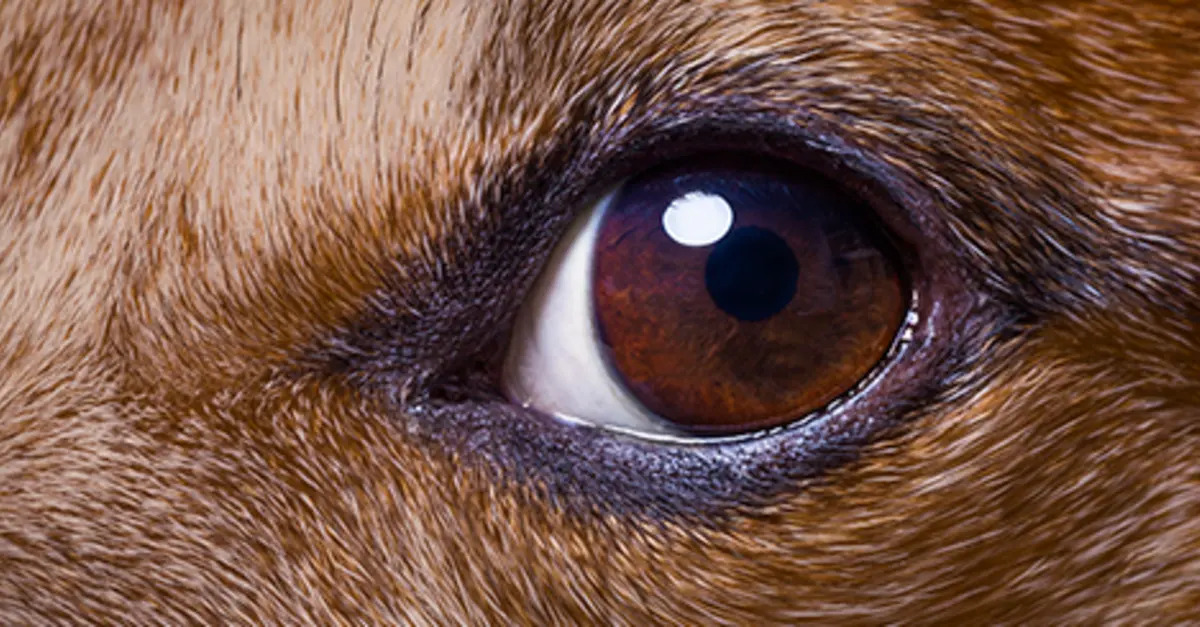Home>Health & Wellness>Common Health Issues>Eye and Ear Health>What Does A Dog’s Eye See


Eye and Ear Health
What Does A Dog’s Eye See
Published: February 12, 2024
Discover how to maintain your dog's eye and ear health and understand what the world looks like through a dog's eyes. Learn more about eye and ear care for your furry friend.
(Many of the links in this article redirect to a specific reviewed product. Your purchase of these products through affiliate links helps to generate commission for Pawsomeoldies.com, at no extra cost. Learn more)
Table of Contents
Introduction
A dog's eyes are not just windows to their soul; they are also remarkable tools that shape their perception of the world. Understanding how a dog sees the world through their eyes provides valuable insights into their behavior, preferences, and overall well-being. Dogs rely heavily on their vision to navigate their surroundings, interact with humans and other animals, and engage in activities that bring them joy and fulfillment.
The way dogs perceive the world through their eyes is a fascinating subject that has intrigued scientists, veterinarians, and dog lovers alike. By delving into the intricacies of a dog's visual system, we can gain a deeper appreciation for the unique perspective they have on the world around them. From their remarkable night vision to their ability to detect subtle movements, a dog's visual capabilities are nothing short of extraordinary.
In this article, we will embark on a captivating journey into the world of a dog's eyes, exploring the anatomy of their eyes, their visual acuity, color vision, peripheral vision, night vision, and motion detection. By shedding light on these aspects, we aim to unravel the mysteries of how dogs perceive the world visually, providing valuable insights that can deepen our bond with these incredible companions. So, let's embark on this enlightening exploration of a dog's visual world and gain a newfound appreciation for the remarkable capabilities of their eyes.
Read more: How To Be A Seeing-Eye Dog Foster
Anatomy of a Dog's Eye
A dog's eye is a marvel of biological engineering, finely tuned to meet the unique visual needs of these beloved companions. The anatomy of a dog's eye is a testament to the intricate mechanisms that enable them to perceive the world around them. At first glance, a dog's eye may appear similar to a human's, but upon closer inspection, several key differences become apparent.
The outermost layer of a dog's eye consists of the cornea, a transparent dome-shaped structure that serves as the eye's protective barrier. Beneath the cornea lies the iris, the colorful part of the eye that regulates the amount of light entering the eye through its adjustable opening, known as the pupil. The iris of a dog's eye exhibits a wide range of captivating hues, adding to the individuality and charm of each dog's gaze.
The lens, located behind the iris, plays a crucial role in focusing incoming light onto the retina, which is akin to the film in a camera. The retina is densely packed with photoreceptor cells called rods and cones, which are responsible for capturing light and converting it into electrical signals that can be interpreted by the brain. Dogs have a higher concentration of rod cells in their retinas, enhancing their ability to see in low-light conditions.
One remarkable feature of a dog's eye is the tapetum lucidum, a reflective layer located behind the retina. This specialized structure acts like a mirror, reflecting incoming light back through the retina, thereby maximizing the efficiency of light capture. The tapetum lucidum is responsible for the mesmerizing glow often seen in a dog's eyes at night, a phenomenon that adds to their mystique and allure.
The optic nerve, which transmits visual information from the retina to the brain, is a vital component of a dog's visual system. This intricate network of structures, including the cornea, iris, lens, retina, and optic nerve, collaborates seamlessly to enable dogs to perceive the world with remarkable clarity and precision.
Understanding the intricate anatomy of a dog's eye provides valuable insights into the visual capabilities and unique adaptations that shape their perception of the world. By delving into the complexities of a dog's eye structure, we gain a deeper appreciation for the marvels of nature that enable our canine companions to experience the world in their own extraordinary way.
Visual Acuity
Visual acuity refers to the clarity and sharpness of vision, allowing an individual to discern fine details and distinguish objects at a distance. In the case of dogs, visual acuity plays a pivotal role in their ability to navigate their environment, track movement, and engage in activities such as hunting or playing fetch.
While dogs possess remarkable visual acuity, it differs from that of humans in several key aspects. Dogs have a higher concentration of rod cells in their retinas, which are specialized for low-light vision and motion detection. This adaptation enables them to excel in dim lighting conditions, making them adept hunters during dawn and dusk, when their prey is most active.
In terms of visual acuity, dogs generally have lower resolution compared to humans. Their visual acuity is estimated to be around 20/75 to 20/20, meaning that what a human with normal vision can see at 75 feet, a dog would need to be at 20 feet to see with similar clarity. This lower resolution is compensated by their exceptional motion detection and night vision capabilities, allowing them to excel in tasks that require detecting movement or tracking scents in low-light conditions.
The visual acuity of a dog is also influenced by factors such as breed, age, and overall eye health. Certain breeds, such as sighthounds, are known for their exceptional visual acuity and are prized for their ability to spot distant prey with remarkable precision. Additionally, as dogs age, their visual acuity may decline, highlighting the importance of regular eye examinations to monitor their vision and address any potential issues.
Understanding the nuances of a dog's visual acuity provides valuable insights into their unique perspective on the world. By recognizing their strengths in low-light vision and motion detection, we can tailor activities and environments to cater to their visual capabilities, ensuring that they can fully engage with the world around them.
In essence, a dog's visual acuity, while different from that of humans, is finely tuned to meet their specific needs, allowing them to perceive the world with remarkable clarity and precision in their own extraordinary way.
Color Vision
Color vision is a fascinating aspect of a dog's visual perception, offering valuable insights into how they experience the vibrant tapestry of the world around them. While it was previously believed that dogs saw the world in black and white, scientific research has shed light on the intricacies of their color vision, revealing a spectrum of hues that shape their visual encounters.
Dogs possess dichromatic color vision, meaning they perceive the world through a range of colors, albeit with some limitations compared to humans. The human eye contains three types of color receptors, known as cones, which are sensitive to different wavelengths of light corresponding to red, green, and blue. In contrast, dogs have two main types of cones, sensitive to blue and yellow wavelengths, with limited sensitivity to red and green.
This unique configuration of color receptors influences a dog's perception of the world, leading to a heightened sensitivity to blue and yellow hues, while experiencing red and green tones with less distinction. As a result, dogs perceive the world in a more subdued color palette, with certain shades appearing less vibrant or indistinguishable from one another.
Despite these differences, dogs' color vision still enables them to appreciate and respond to a variety of colors in their environment. They can discern shades of blue and yellow with relative clarity, allowing them to differentiate between objects and navigate their surroundings with remarkable precision. This ability to perceive certain colors enriches their visual experiences and influences their interactions with the world around them.
Understanding a dog's color vision provides valuable insights for pet owners, trainers, and veterinarians, guiding the creation of enriching environments and tailored experiences that align with a dog's unique visual capabilities. By incorporating colors that are more discernible to dogs, such as blue and yellow, into their toys, training aids, and living spaces, we can enhance their visual engagement and overall well-being.
In essence, while dogs may not perceive the world in the same kaleidoscope of colors as humans, their dichromatic color vision enriches their visual encounters, shaping their interactions and experiences in a captivating and nuanced manner.
Peripheral Vision
Peripheral vision, also known as side vision, plays a crucial role in a dog's visual perception, shaping their awareness of the surrounding environment and influencing their responses to stimuli. Dogs possess exceptional peripheral vision, allowing them to detect movement and monitor their surroundings with remarkable precision.
The anatomy of a dog's eye contributes to their impressive peripheral vision. The positioning of their eyes on the sides of their head grants them a wide field of view, enhancing their ability to detect motion and potential threats from various angles. This evolutionary adaptation, inherited from their ancestors, provides dogs with a heightened sense of vigilance, enabling them to excel in activities such as hunting, herding, and navigating dynamic environments.
The expansive peripheral vision of dogs serves as a vital tool for maintaining situational awareness and detecting subtle changes in their surroundings. Whether it's spotting a squirrel darting across the yard or monitoring the movements of fellow canine companions during play, dogs rely on their peripheral vision to remain attuned to the ever-changing landscape of their environment.
Furthermore, the exceptional peripheral vision of dogs contributes to their ability to interpret social cues and body language, both from humans and other animals. By capturing a broad visual panorama, dogs can assess the demeanor and intentions of those around them, facilitating communication and interaction in various social contexts.
Understanding the significance of peripheral vision in dogs sheds light on the ways in which they perceive and engage with the world. By recognizing the pivotal role of peripheral vision in their visual repertoire, we can create environments and experiences that cater to their wide-ranging field of view, promoting a sense of security, engagement, and overall well-being.
In essence, a dog's peripheral vision serves as a cornerstone of their visual prowess, enriching their experiences and interactions with the world while contributing to their remarkable adaptability and responsiveness to the dynamic tapestry of life around them.
Read more: What Do Seeing-Eye Dogs Do
Night Vision
Night vision is a defining feature of a dog's visual prowess, setting them apart as adept nocturnal hunters and vigilant guardians in low-light conditions. The remarkable ability of dogs to see in the dark is attributed to a combination of anatomical and physiological adaptations that equip them for navigating dimly lit environments with exceptional clarity and precision.
At the core of a dog's night vision capabilities lies the presence of a specialized structure known as the tapetum lucidum, located behind the retina. This reflective layer acts as a biological mirror, effectively amplifying incoming light by reflecting it back through the retina. This ingenious mechanism enhances the efficiency of light capture, allowing dogs to make the most of limited ambient light and perceive their surroundings with heightened clarity, even in near darkness.
The tapetum lucidum also contributes to the mesmerizing phenomenon of a dog's eyes appearing to glow in the dark, a captivating trait that adds to their mystique and allure. This ethereal glow, known as eyeshine, is a result of light reflecting off the tapetum lucidum, creating a luminous effect that enhances a dog's visibility in low-light settings.
Furthermore, the high concentration of rod cells in a dog's retina plays a pivotal role in their night vision prowess. Rod cells are specialized photoreceptors that excel in capturing dim light, making them instrumental in facilitating vision in low-light conditions. This heightened sensitivity to low levels of light enables dogs to discern shapes, movements, and objects in environments where human vision would be significantly impaired.
The combination of the tapetum lucidum and the abundance of rod cells endows dogs with exceptional night vision, allowing them to navigate dimly lit spaces, track movement, and engage in activities such as hunting or patrolling with remarkable efficiency. This adaptation harkens back to their ancestral roots as nocturnal hunters and pack animals, underscoring the evolutionary significance of their night vision capabilities.
Understanding the intricacies of a dog's night vision provides valuable insights into their remarkable adaptability and sensory acumen. By recognizing the unique mechanisms that underpin their ability to see in the dark, we can create environments and activities that cater to their exceptional night vision, ensuring that they can fully engage with the world around them, even under the veil of darkness.
In essence, a dog's night vision stands as a testament to their extraordinary visual capabilities, enriching their experiences and interactions in the nocturnal realm while underscoring the marvels of nature that shape their unique perspective on the world.
Motion Detection
Motion detection is a cornerstone of a dog's visual prowess, playing a pivotal role in their ability to monitor their surroundings, track moving objects, and engage in activities that rely on keen visual acumen. Dogs are equipped with remarkable motion detection capabilities, honed by evolutionary adaptations and specialized visual mechanisms that enable them to excel in tasks that require detecting movement with precision and agility.
At the heart of a dog's exceptional motion detection lies the high concentration of rod cells in their retinas. Rod cells are specialized photoreceptors that excel in capturing low levels of light and detecting subtle changes in the visual field. This heightened sensitivity to motion equips dogs with the ability to track moving objects, whether it's a swiftly darting squirrel in the backyard or a toy being tossed during a game of fetch. The abundance of rod cells allows dogs to remain vigilant and responsive to dynamic stimuli, showcasing their innate ability to interpret and react to movement in their environment.
Furthermore, the positioning of a dog's eyes on the sides of their head contributes to their adeptness in motion detection. This lateral placement grants dogs an expansive field of view, enhancing their ability to detect movement from various angles and distances. Whether it's monitoring the subtle swaying of foliage or tracking the trajectory of a flying frisbee, dogs leverage their wide-ranging peripheral vision to remain attuned to the dynamic tapestry of motion that unfolds around them.
The evolutionary heritage of dogs as hunters and pack animals further underscores the significance of their motion detection prowess. In the wild, the ability to detect and pursue moving prey was essential for survival, shaping the visual acuity and sensory adaptations of dogs over millennia. This ancestral legacy continues to resonate in the modern canine, as their innate aptitude for motion detection enriches activities such as agility training, herding, and interactive play, fostering a deep sense of engagement and fulfillment.
Understanding the intricacies of a dog's motion detection capabilities provides valuable insights for pet owners, trainers, and behaviorists. By recognizing the innate strengths of dogs in detecting movement, we can tailor activities, training exercises, and environmental stimuli to align with their natural inclinations, promoting mental stimulation, physical activity, and overall well-being.
In essence, a dog's remarkable motion detection abilities stand as a testament to their sensory acumen and evolutionary heritage, enriching their experiences and interactions with the dynamic world around them.
Conclusion
In conclusion, delving into the captivating realm of a dog's visual perception has unveiled a tapestry of remarkable adaptations, sensory acumen, and evolutionary legacies that shape their unique perspective on the world. From the intricate anatomy of their eyes to their exceptional night vision, motion detection, and color vision, dogs possess a visual repertoire that enriches their experiences and interactions in profound ways.
The anatomy of a dog's eye, with its protective cornea, colorful iris, and light-capturing retina, stands as a testament to the marvels of biological engineering that enable dogs to perceive the world with remarkable clarity and precision. The presence of the tapetum lucidum, coupled with a high concentration of rod cells, underpins their exceptional night vision, allowing them to navigate dimly lit environments and engage in activities under the cover of darkness.
Furthermore, the dichromatic color vision of dogs, while distinct from that of humans, enriches their visual encounters, shaping their interactions with the vibrant hues of the world. Their expansive peripheral vision and adept motion detection capabilities underscore their vigilance and responsiveness to the dynamic tapestry of motion that unfolds around them, reflecting their evolutionary heritage as hunters and pack animals.
Understanding the nuances of a dog's visual acuity, color vision, peripheral vision, night vision, and motion detection provides valuable insights for pet owners, trainers, and veterinarians. By recognizing the unique strengths and adaptations that underpin a dog's visual perception, we can create environments, activities, and experiences that cater to their sensory acumen, promoting engagement, well-being, and a deeper bond between humans and their canine companions.
In essence, the journey into a dog's visual world has unveiled a rich tapestry of sensory marvels, evolutionary legacies, and adaptive mechanisms that shape their unique perspective on the world. By embracing and honoring the intricacies of a dog's visual perception, we can forge deeper connections, foster enriched experiences, and celebrate the extraordinary capabilities that define our beloved canine companions.
